Exploring Local Options for Splash Blocks
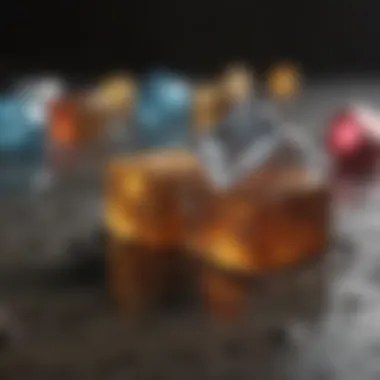
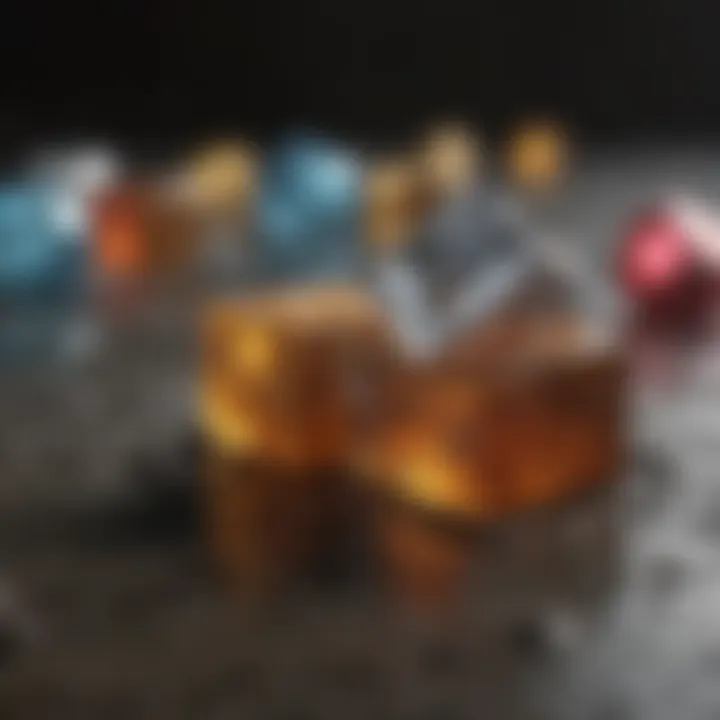
Prologue
In the realm of home improvement, specialized components like splash blocks often go unnoticed until a problem arises. These seemingly unassuming structures play an essential role in directing water away from foundations, hence safeguarding your home from water damage. What’s more, selecting the right splash block can help streamline your drainage system, which ultimately enhances the longevity of your property.
The significance of splash blocks cannot be overstated; they are critical to effective rainwater management. Proper installation and maintenance can prevent water pooling, which can do a number on your yard and home. Understanding why, when, and how to choose the right splash blocks is key, especially since a poor choice can lead to regrettable consequences down the line.
Importance of the Topic
For homeowners and housewives alike, investing time in understanding splash blocks translates into better drainage solutions and less time fretting over costly repairs. They are not just an accessory but a necessity for households prone to heavy rainfall or with basements near ground level. Ultimately, choosing the right type, material, and proper installation could save you a headache or two as well as considerable amounts of money.
Diving into this guide, you’ll get a detailed view of the local options available, common challenges faced, and how to tackle them. Whether you're a DIY enthusiast or prefer hiring professionals, we’ve got the insights you need to navigate the complexities of splash blocks effectively.
Understanding Splash Blocks
Understanding the intricacies of splash blocks is essential for anyone looking to enhance their drainage systems. These simple structures serve a purpose that many might overlook, yet their contribution to preventing water damage is significant. Knowing what splash blocks are, their functionalities, and the materials they're made from paves the way for making informed decisions when choosing the right option for your home or property.
Definition and Purpose
A splash block, at its core, is a slab of material placed under downspouts to direct rainwater away from the foundation of a building. The primary purpose of these blocks is to prevent soil erosion as well as to ensure that water doesn't accumulate around the base of a home, which could lead to serious structural issues over time. Additionally, these blocks can help in managing water runoff from heavy rains, maintaining the integrity of landscaping. Without splash blocks, downspouts might let water pour straight down, causing a host of problems such as pooling, which can attract unwanted pests or create a breeding ground for mold.
Functional Importance
The importance of splash blocks cannot be underestimated. They play a critical role in the overall drainage system of your property. While it may seem like a small component compared to gutters or pipes, the effectiveness of water management relies heavily on their proper installation and functionality. They help in redirecting water towards designated areas, like gardens or drainage systems, preventing unwanted flooding in basements or crawl spaces. The dependable function of splash blocks ensures maximum efficiency in your home’s drainage system, promoting the longevity of your property and enhancing its value over time.
Common Materials Used
When it comes to splash blocks, the materials you choose can have a profound impact on their efficiency and longevity. The most common materials include:
Concrete
Concrete is perhaps the most common material for splash blocks due to its durability and strength. One of the key characteristics of concrete is its robustness, making it a popular choice for various exterior applications. It can withstand heavy rainfall and is less likely to shift or break compared to other materials.
However, while concrete is sturdy, it's worth noting that it can crack over time due to freeze-thaw cycles, leading to potential issues if not maintained. If you consider using concrete, make sure to seal it regularly to prolong its lifespan.
Plastic
Plastic splash blocks offer a lightweight and cost-effective alternative to concrete. One of their standout features is their resistance to corrosion and weathering. Unlike concrete, plastic won't crack or chip easily, which makes it a beneficial choice for those who live in areas with fluctuating temperatures. Furthermore, they come in various colors and shapes, which can allow homeowners to match them to their landscape aesthetically.
Nonetheless, while they’re durable, they may not provide the same weight and stability as concrete, making them more prone to displacement during heavy storms.
Metal
Metal splash blocks, often made from galvanized steel or aluminum, tend to be robust and long-lasting. A key characteristic of metal is its ability to resist rust when properly treated, which increases its durability. Metal blocks can be particularly effective in high-traffic areas, where they may better withstand the wear and tear that often occurs over time.
However, the initial cost can be a deterrent for some homeowners. Metal may also heat up quickly under the sun, which could be a consideration depending on the placement.
In summary, understanding splash blocks involves looking beyond just their basic function. It's about considering their material, how they work within your property's drainage system, and ultimately how they can save you costly repairs down the road.
Local Market Search Strategies
Finding the right splash blocks for your drainage needs is not just about browsing the first few results on your favorite search engine. Instead, it involves a more strategic approach to navigating the local market effectively. When it comes to sourcing these essential components, knowing how to utilize various search strategies can lead to better options and save you both time and money.
A well-formulated approach includes specific keywords that can help refine search results, tapping into online platforms, and leveraging community resources that are rich in local knowledge. This three-pronged strategy is integral for homeowners and housewives who seek reliable and quality supplies.
Keywords for Effective Searching


Selecting the right keywords can significantly enhance the search experience. By using phrases like "best splash blocks in [Your City]" or "local splash block suppliers," you can direct your search more intelligently. Think about terms that reflect what you are looking for, particularities of your region, or the materials you have in mind.
This focused approach not only increases the chances of finding quality providers but also helps in cutting through the clutter of irrelevant, generalized search results. Users can benefit from searching within multiple iterations of queries as they might stumble upon lesser-known suppliers or options that stand out for their quality and service.
Utilizing Online Platforms
Local Directories
Local directories are treasure troves when it comes to locating splash block suppliers. These platforms, such as Yelp or Yellow Pages, provide a comprehensive list of businesses, complete with reviews and ratings from other homeowners. They often categorize businesses by type, which means you can quickly find those that specialize in building supplies or landscaping materials.
The key characteristic of local directories is their focus on businesses in your area. This local angle ensures that you’re considering options that you can physically access should you choose to inspect the materials before purchase. One advantage of using these directories is that many offer photos and user-generated content showcasing the products, which can give you a clearer idea of what to expect.
However, it’s worth noting that not all listings may be up-to-date, so exercising a level of caution and cross-referencing is advisable.
E-commerce Websites
E-commerce websites like Amazon or Home Depot offer a different perspective on sourcing splash blocks. The convenience of shopping from your couch cannot be overstated. You’ll find a wide array of options, often at competitive prices. E-commerce sites often incorporate user reviews, allowing you to see what materials and styles work best in real-life situations.
A unique feature of these platforms is their efficient return policies, which can reduce the risk associated with online purchases. That’s something you might not always get with local suppliers. However, the downside could be waiting for shipping versus walking out with your purchase the same day.
Community Resources
Home Improvement Stores
Local home improvement stores like Lowe's or Home Depot typically have a reliable range of splash blocks available. These stores not only sell the products but often have knowledgeable staff who can provide insights on what works best for different drainage needs. This aspect can be immensely helpful for DIY enthusiasts who need expert advice.
Moreover, visiting these places allows you to physically inspect the products, ensuring they meet your standards before you make a decision. However, sometimes the selection can be limited compared to online options, particularly in smaller shops.
Local Landscaping Services
Local landscaping companies can serve as a valuable resource in the search for splash blocks. Many offer advice on the most effective products based on the specific needs of your landscape and can also supply them directly. This could be particularly beneficial for those who want to ensure their drainage solutions are harmonized with overall landscape design.
These services often have experience with what works best in your area’s specific climate and soil conditions, which is a strong technological edge. On the other hand, relying solely on these services might lead to higher costs if you are considering a DIY installation.
Remember: The right search strategy not only unearths quality materials but also connects you with knowledgeable suppliers who can guide you in making informed decisions about splash blocks.
Evaluating Options
When it comes to selecting splash blocks, the process isn't as simple as picking one off the shelf. Evaluating options is an essential step that demands attention to specific elements crucial for effective drainage and long-term performance. Understanding these factors will not only save you from future headaches but also ensure that your investment stands the test of time.
Assessing Quality and Durability
Quality is paramount when selecting splash blocks because these components bear the brunt of environmental stress. High-quality splash blocks resist wear from weathering, erosion, and shifting ground conditions. One approach to assess quality is by examining materials: concrete blocks are typically sturdier than plastic or metal variations. However, even among concrete options, some have additives that improve their resilience, allowing them to handle heavy rain without succumbing to damage.
One can determine the quality through the manufacturer's specifications but also by observing past user experiences—look for feedback regarding the block's performance in harsh conditions.
Additionally, examining how well a product retains color can help gauge durability. Fading paint on plastic means you may be looking at flaking and deterioration sooner than later.
Cost Considerations
The price tag on splash blocks varies widely and understanding what drives these costs is vital. First, consider the material used. Concrete blocks tend to be priced higher due to their robustness, while inexpensive options may likely be plastic or resin, which may not hold up under pressure.
Think about it this way: spending less now might lead to needing replacements sooner, adding up costs in the long run.
- Budgeting: Set a reasonable budget before starting your search. Allow a cushion for unexpected expenses while still aiming for quality.
- Comparing Vendors: Don’t take a single quote at face value. Shopping around—both locally and online—can help snatch a good deal. Use local directories or platforms like Facebook Marketplace to compare different prices before deciding.
- Long-term Costs: Factor in installation and potential maintenance needs as well. A more durable splash block could save you in repair costs, making the initial outlay worth it.
Environmental Impact
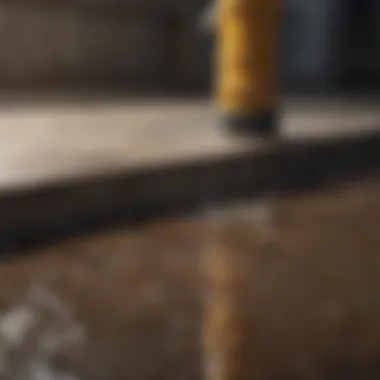
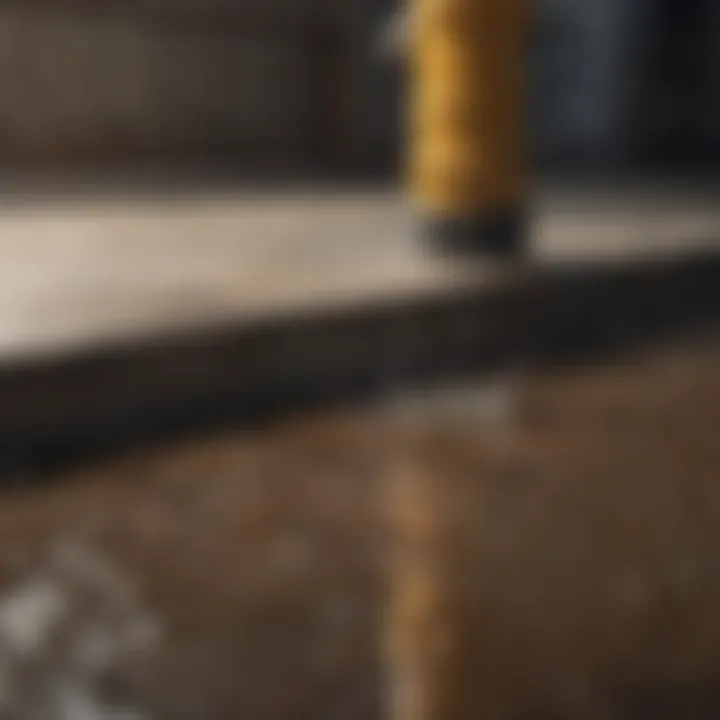
In today’s world, environmental stewardship matters more than ever. Each splash block’s production process, material sourcing, and eventual disposal must be considered. Opting for eco-friendly materials—like recycled plastic or sustainably sourced concrete—can minimize damage to our natural world.
Moreover, splash blocks play an integral role in directing runoff away from sensitive areas such as gardens, basements, and public walkways:
- Registering Runoff: Ensure the block you choose effectively reroutes rainwater to not only protect your property but also reduce erosion in nearby landscapes.
- Longevity & Decomposition: Understand how materials break down over time. Certain plastics can create waste if discarded improperly, while natural materials break down more harmoniously with the environment.
"Choosing the right splash block is more than just about functionality; it reflects our commitment to intelligent consumerism and sustainable living."
By weighing quality, price, and environmental impact, you're setting the stage for a more informed purchasing decision. A careful evaluation not only enhances drainage efficiency but also aligns your choices with broader environmental goals.
Installation of Splash Blocks
When you're managing water drainage around your home, getting splash blocks installed correctly can be a game changer. These heavy-duty pieces work tirelessly to direct runoff away from your foundation, safeguarding your property against water damage. It's not just about functionality; the right installation ensures better performance and longevity. Plus, knowing how to either do it yourself or rope in the pros can save you headaches later on.
DIY Installation Tips
For the handy type, installing splash blocks can be a rewarding task. Here are some tips to help you hit the ground running:
- Select the Right Size: Do some measuring before making your purchase. Ensure your splash blocks are appropriately sized for the gutters you're working with.
- Choose Your Location Wisely: Find a spot where rainwater can flow freely away from your house. Avoid areas where water tends to pool.
- Flat Surface Matters: Make sure the ground beneath is even. Many homeowners overlook this, only to find their splash block leaning or not aligning properly.
- Use Proper Materials: If you’re using concrete splash blocks, ensure they’re buried deep enough to prevent shifting. Plastic ones usually need less anchoring.
- Regular Checks: Once installed, keep an eye on them after every heavy rainfall. Little adjustments here and there can prevent larger issues down the line.
Hiring Professional Services
If DIY isn't your jam, hiring professionals might be the way to go. It's often a safe bet, especially for those with little experience in home installations. Here's what to look for when bringing in the experts:
Credentials to Look For
When you're checking potential contractors, credentials are paramount. Look for:
- Licensing and Insurance: Make sure the contractors are properly licensed and insured. This protects you and gives some peace of mind in case things don't go as planned.
- Experience: A track record matters. All the fancy paperwork is nothing without practical know-how. Find out how long they’ve been in business and whether they specialize in drainage solutions.
- References: Ask for past client contacts, or better yet, get them to show you project examples. A satisfied customer will vouch for their work.
These aspects come together to showcase that you're dealing with a reputable service provider, which can significantly enhance the outcome of your installation.
Cost of Professional Installation
Professional services come with a price tag; knowing what you'll be investing is crucial. Here are aspects to keep in mind:
- Initial Estimates: Get detailed quotes from multiple contractors. Ask them to break down the costs—labor, materials, and any other fees. This shines a light on what you’re really paying for.
- Long-Term Savings: While it may seem hefty upfront, professional installation often leads to fewer repairs in the future. A job done right means you’ll sidestep costly mishaps down the road.
- Hidden Costs: Inquire about anything else that could pop up during the installation process. It's wise to have a budget cushion for unexpected expenses.
Maintenance Practices
Maintenance is like the silent guardian of your splash blocks, ensuring they serve their purpose effectively and prolong their lifespan. Not only does it save you from future headaches, but it can also keep your home safe from water-related issues. This section dives into some pivotal practices that every homeowner should consider when it comes to maintaining these crucial installations.
Routine Inspection
Engaging in routine inspections of your splash blocks is a critical first step. Think of it as checking your car’s tires or making sure your smoke alarms work; it just makes sense. You should schedule these inspections at least twice a year, ideally before and after the rainy seasons.
Looking closely, you’ll want to check for any debris that might be obstructing water flow or visible cracks that could lead to further damage. Ensure the blocks are aligned properly and sit at the right angle to channel water away from your foundation. Noticing small issues early can save you the trouble—and money—of bigger repairs down the line.
Common Problems and Solutions
Dealing with splash blocks? There are a few common problems to be aware of. Here, we’ll focus on two major issues, clogging and wear and tear, that might pop up as you go about your maintenance.
Clogging Issues
Clogging issues can significantly hamper the efficiency of your splash blocks. This happens when leaves, mud, or other unwanted debris accumulate in the channels, preventing water from flowing freely. If not addressed quickly, clogging can lead to water pooling in your yard or, worse, seeping into your basement.
The unique feature of dealing with clogging is that it's pretty straightforward to solve. Regularly clearing out debris and using a hose to flush out channels can keep clogging at bay. Remember that it’s not just a hassle; it also protects your property from potential damage, making it a popular choice among homeowners.
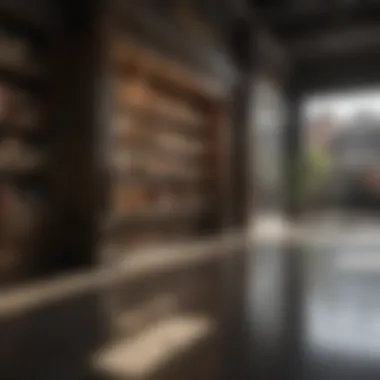

Wear and Tear
Every splash block undergoes wear and tear over time. Weather changes, UV exposure, and physical obstacles can chip away at their surfaces, affecting their ability to direct water efficiently. The key characteristic here is that, eventually, every material has its limits, whether it’s concrete cracking under pressure or plastic becoming brittle in the sun.
It's crucial to keep an eye out for signs of wear and tear as they signal the need for replacement or repair. Addressing these issues sooner rather than later is vital, as neglect can lead to more significant problems, such as structural damages to your home. In this regard, understanding how to identify when a splash block is nearing the end of its useful life is immensely beneficial.
"The best time to fix a leak is before it starts!"
Proper maintenance practices, like routine inspection, and understanding common problems along with their solutions create the backbone of an effective strategy for managing your splash blocks.
Finding Reliable Suppliers
When you step into the search for splash blocks, finding trustworthy suppliers becomes a cornerstone of your project’s success. The quality of your materials directly influences not only the efficiency of your drainage system but also its longevity. Reliable suppliers tend to source quality products, which means you're not just buying a block; you're investing in a solution that works for you in rain or shine.
One key benefit of selecting reputable suppliers is peace of mind. If you know where you’re purchasing, there’s less chance of receiving subpar products that might crumble or clog over time. This reduces the hassle of replacement and maintenance, as installing a high-quality splash block means less chance of facing issues soon after the purchase.
Moreover, reliable suppliers usually offer after-sales support. This could manifest in providing guidance for installation, maintenance tips, or even help with product warranties. Additionally, they tend to be more transparent about the materials they use and how these adapt to your specific needs, giving you a better overall experience.
Local vs. Online Suppliers
Choosing between local and online suppliers can feel like a tug-of-war, but both have their unique advantages. Local suppliers often boast an intimate understanding of the community’s needs. They can provide tailored advice based on local weather patterns and soil types, which directly affect splash block functionality. Plus, purchasing locally can often facilitate quicker resolutions to any immediate issues or questions you may have. You can also inspect products in person, ensuring they meet your expectations.
On the other hand, online suppliers might offer a broader range of options. With a few clicks, you can compare prices and styles, sometimes snagging better deals or unique items. Many reputable e-commerce platforms also feature customer reviews, allowing you to gauge the quality and reputation of their offerings.
Ultimately, whether you lean towards local suppliers for personalized service or online ones for variety, evaluate what is most important for your splash block needs.
Reviews and Recommendations
Word of Mouth
There’s something about recommendations from friends and family that can’t be bought. Word of mouth holds significant weight in the buying process. When someone raves about a particular supplier, it often adds a layer of trustworthiness to that name. This method isn’t just about popularity; it’s about relationships and experiences.
In the journey for splash blocks, hearing firsthand accounts can guide you toward reputable suppliers you might not stumble upon otherwise. Knowing that someone has had a positive experience can make a world of difference when making your choice. The only downside to word of mouth is that it tends to be somewhat limited—after all, you can only talk to so many people before you run out of options.
Online Feedback Platforms
On the flip side, online feedback platforms offer a treasure trove of information. Websites like Yelp or Trustpilot compile reviews from a wide range of users, giving you a broader perspective on various suppliers. Unlike word of mouth, these platforms provide a plethora of experiences, which can help you spot trends—like consistent quality complaints or service accolades.
The beauty of online platforms lies in their accessibility. You can look up reviews at any time, drawing from a wide pool of customer sentiments without having to rely solely on your immediate circle. However, always remember to evaluate reviews carefully. A single sour grape or two shouldn't eclipse a generally positive vibe.
"When it comes to making significant purchases, having a wealth of opinions is invaluable in steering your course."
By analyzing both word-of-mouth recommendations and online feedback, you'll equip yourself with a clearer view of potential suppliers. Doing so ensures your decision in sourcing splash blocks is informed, ultimately paving the way for a resilient and effective drainage solution.
End
In the labyrinth of home maintenance, understanding the role of splash blocks is pivotal. As simple as they may seem, these components are a crucial line of defense against erosion and water damage. Ensuring their proper selection and installation not only protects the property but also enhances its longevity and value. This article has walked you through the intricacies of splash blocks, from the materials available to the nuances of installation and upkeep.
Summary of Key Points
Throughout the discussion, we've highlighted several key aspects:
- Definition and Importance: Splash blocks guide water away from foundation areas, preventing costly repairs due to erosion.
- Materials and Suppliers: The right material—whether concrete, plastic, or metal—makes a difference in durability and performance. Local suppliers can provide both options and insights.
- Installation and Maintenance: Proper installation is essential for effectiveness, and routine maintenance helps catch any potential issues early on.
- Evaluating Suppliers: Reviews and recommendations flatten the learning curve, guiding you to reliable sources for both products and installation services.
By taking these points to heart, homeowners can navigate the seemingly daunting task of selecting and installing splash blocks with clarity and confidence.
Future Considerations in Splash Block Design
As we move into a future that's increasingly shaped by environmental concerns, the design and function of splash blocks are also bound to evolve. Consider these emerging trends:
- Sustainable Materials: More manufacturers are now exploring eco-friendly options that reduce environmental impact. Options like recycled plastic and permeable materials might gain traction.
- Customized Designs: Homeowners may seek products tailored to their unique properties. This includes custom shapes and sizes that better fit specific drainage needs.
- Smart Technology Integration: Just as many home appliances are becoming “smart,” splash blocks may soon be integrated with sensors that monitor water flow and alert homeowners to drainage issues in real time.
With the landscape of home maintenance shifting, staying informed and adaptable will equip homeowners to make decisions that align not only with their immediate needs but also with broader ecological considerations.







